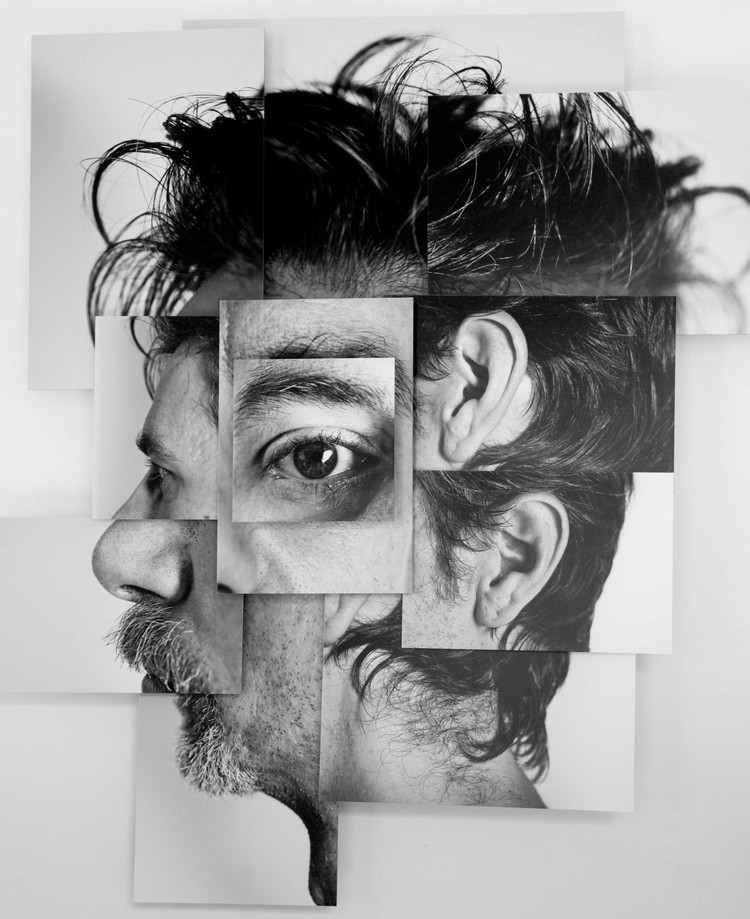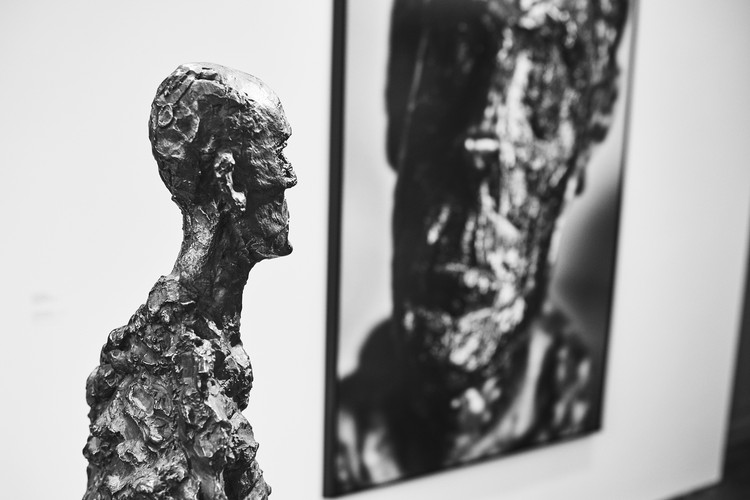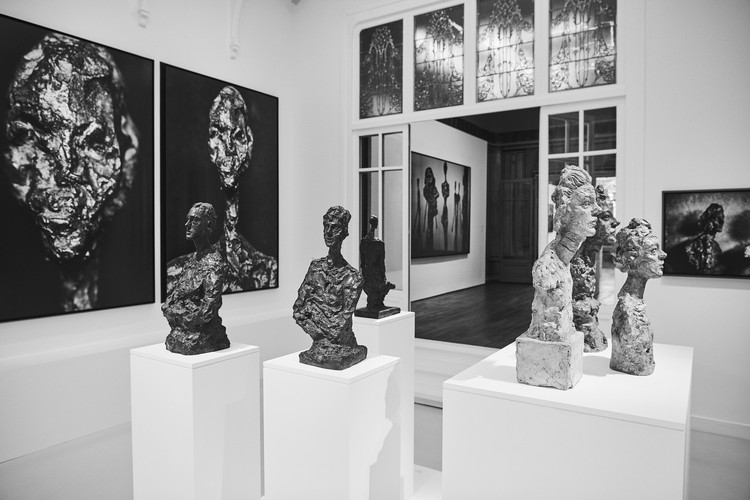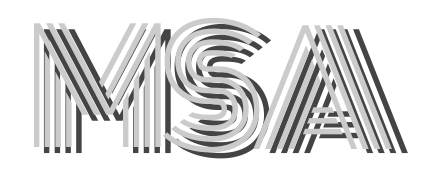The Relationship Between Sculpture And Photography
The Relationship Between Sculpture And Photography
Wojciechowski 2004, p. 32
The relationship between sculpture and photography, unlike the dialogue between the latter and painting, was long treated as a peripheral issue. For years the disciplines in question were considered incompatible, as if they belonged to different areas of cognition and represented disparate ways of capturing reality. Yet as early as the mid-20th century photography began to show potential that sculpture seemed to be lack. Photography appeared to be more accurate, more appealing, and in step with modernization in art. Its popularity rose further as cameras could be accessed more and more easily. In addition, the period of time necessary to develop pictures was greatly shortened. Too strongly reminiscent of traditional crafts, sculpture seemed to be dying out. The following years, however, did not witness its extinction as sculpture also started to evolve both on the formal and conceptual level.

The Relationship Between Sculpture And Photography (4)
Wojciechowski 1989, p. 54
Aware of a large degree of overlap between the two forms of artistic expression, (e.g. with respect to materiality, spatiality, or accentuating frozen gestures) sculptors did not leave sculpture for photography. But they attempted to create works that were interdisciplinary in structure. Paraphrasing the words of J.Jarnuszkiewicz, one can say that the camera created distance between the hand of the sculptor and the material. It began to perform a function comparable to that of the telescope in astronomy or the microscope in biology. It became an indispensable tool, the new chisel, while pictures gradually started to serve as material.
Kowalski, Sitkowska 2004, p. 9
The introduction to the catalogue from the exhibition Sculptors Photograph, which took place in Królikarnia in 2004, boasts a description of sculptors who are predestined to employ photography due to the peculiar perception of art and reality they exhibit. “Sculptors […] are artists who see the world in terms of space and movement (unlike, for instance, painters, whose main foci are colour, chiaroscuro etc.). They photograph, i.e. they shape, form and give a permanent character to their visions by means of photography, whether traditional or digital”.
Cielar & Cielar , Kowalski, Wróblewski 2004, pp. 14-15
According to E. Cielar, one of the earliest artworks to evince such an approach to sculpture is A. Rodin’s St. John. E. Cielar sees the work as an outcome of photographic perception of reality through considering it to be a photograph taken in sculptural material that consists of diverse profiles, or a sequence of pictures. Interestingly, although O. Hansen and J. Jarnuszkiewicz use the expression widely, it was A. Rodin who first described sculptural objects as having an infinite number of profiles. Such an interpretation puts sculpture and photography very close to each other.
Czartoryska 2002, p. 16
It is worth mentioning that sculpture and photography also have much in common with respect to their expressive potential concerning physicality and the memory of the body. As U. Czartoryska puts it, “a cast and a photograph are two aspects of the same human extra-artistic tradition”.
Czartoryska 2002, p. 45
This could be compared to the way stroboscopic effect and cinematography affected artists’ awareness of people and objects, which ceased to be perceived as having an ultimate form. Time affects each spatial form, which is constantly changing its position, surrounding, and the distribution of light, dark and chiaroscuro. O. Hansen uses almost exactly the same words in his “theory of open sculpture” (Pol.: „teoria rzeby otwartej”), which exerted immense influence on the way Polish sculpture developed in the second part of the 20th century.
Czartoryska 2002, p. 70
Artists, however, took an interest in the incorporation of photography into other artistic fields, such as sculpture, architecture and design much earlier. In the Bauhaus photography played an important part in creating studies from nature and in capturing any artistically stimulating element of the natural surrounding. Pictures were vital components of the documentation of solids, textures, the distribution of light and shade and, for instance, proved to be a helpful tool in clarifying ideas germane to graphic projection. Obviously, the connections between sculpture and photography were further strengthened by the inclusion of photographic reproductions of particular objects in popular collections of the greatest European artworks. Young Polish artists willing to follow developments in foreign sculpture had to resort to photographic prints too. Frequently they created their own reproductions of the sculptures that did not pass socialist censorship.

The Relationship Between Sculpture And Photography (3)
Cielar & Cielar, Kowalski, Wróblewski 2004, p. 12
These included works by H. Moore, M. Bill, N. Gabo, A. Pevsner, C. Brancusi and other distinguished sculptors. The practice of distributing such reproductions in the form of postcards among students from their studio created an incentive for A. J. Wróblewski and O. Rutkowski to create a darkroom for the Faculty of Sculpture in the Academy of Fine Arts in Warsaw.
Soon other Polish academies started to treat photography as an important means of documentation of created artworks. In time, it began to function as a sketch or a record of artistic concepts. It was not long before photographic documentation actually became a requirement for students wishing to pass a course or get a degree. Pictures frequently documented not only the ultimate outcome of artistic creation, but also its particular stages. They helped to store each stage in the memory, which caused many projects to come into being not only in the form of a plaster cast, but also as photographic albums in which particular phases of work were analysed.
Wojciechowski 2004, s. 26
From his student years J. S. Wojciechowski clearly remembers that photography “butted in” so much in the process of creating sculptural forms that it blurred the distinction between cause and effect. He and his fellow students could no longer easily tell whether they aimed to create a three-dimensional, material object using photography as a supportive tool, or quite the opposite, whether their goal was to generate a set of photographs with the help of a number of “spatial and material plans”.
Truszkowski 1999, pp. 65-80
Compared to other works of the same kind, the most spectacular was the diploma piece by Z. Kulik. Z. Kulik decided to dispense with the material representation of her idea and projected a slide show which recorded different spatial and material settings. This idea seems to mould the whole artistic output of the Kwiekulik duo, comprised of herself and her husband.
Duniewski 1969, pp. 52-54
Similarly, Landscape (Pol.: Pejza 1968), A. Duniewski’s diploma piece, only worked as an account of consecutive transformations because of its photographic documentation, since each formal shift destroyed the result of the preceding one. In fact, A. Duniewski’s work necessitated photographic recording in the perception of movement and its compositional and expressive implications. It was a small (42 square feet) surface covered with dry, yellow sand. The artist could move around it freely, view it from above or from any side, direct light to it from different angles, imagine that it is a model of a vast
area or believe it to be a very small one, in which a handful of sand is nothing else but a handful of sand. When talking about his piece, A. Duniewski stressed that sand was the only material that could work such wonders as his primary aim was to create a sculpture in an unreal territory, lighted by unreal suns. He decided to mark his presence in this sandy area by means of photographs specifically because of the short-lived character of the applied material.
Godziewski 2005, p.10
The whole project, apart from the sandpit-like object, boasted pictures hung on the surrounding walls. Although a sculptural object in the traditional sense was not present in the work, the examining board, albeit after a heated discussion, accepted it as a sculpture and awarded A. Duniewski a diploma.
The above incident exemplifies the new nature of sculpture that was formed in the mid-20th century and shifts attention to the process of creation. At that time artists creating traditional sculptures (understood as a solid or as a visually rendered spatial form) began to experiment and cross the boundaries of well-established artistic tradition. They tried to reach the limits of sculpture and deny its sense. Sculpture ceased to encompass a predetermined, precise and restricted set of formal signs.

The Relationship Between Sculpture And Photography (2)
Krakowski 1984, pp. 1314
The process of creation was given prominence, whereas achieving a final and finite sculptural form was deemed pointless. The changes introduced enabled sculptors to interweave their field with other artistic disciplines, especially photography, even more closely.
Cielar & Cielar, Kowalski, Wróblewski 2004, p. 19
Yet another example of the incorporation of the new medium in sculpture is the application of certain formal devices that paved the way for displaying small works in a new perspective. Such devices are to be spotted in the works by H. Morel, O. Hansen, and A. J. Wróblewski who placed small objects against a picture of a landscape or the sky, thereby changing their scale. Similarly, the project of The Owicim Monument (Pol.: Pomnik Owicimski) by A. J. Wróblewski and A. Latos hinges on a photographic montage. Another important element of this work is the mood. Unlike other objects, which were presented in the form of architectural drawings or photographs documenting sculptural maquettes, this one involves a series of pictures showing selected parts of the concentration camp combined with the elements of the monument, which helps us not only understand, but also feel the central idea behind the work. In this case, photography was employed not as a method used for documentation, but as material. In many of his later works A. J. Wróblewski made use of photography in a similar way, such as in a photographic panorama of ruined Muranów (a housing estate in Warsaw) that featured in an exhibition of pictures from the Warsaw Uprising in the Historical Museum of Warsaw. The panorama welcomed visitors at the entrance to the exhibition and kept ‘falling apart’ gradually as they went further.
Gola 1997, p.18
As mentioned earlier, the functional transition of the photograph from a supportive tool to a part of sculptors’ autonomous expression was a key stage in the development of the dialogue between sculpture and photography. This issue was already present in B. Falender’s diploma piece entitled A Portrait of a Group: People from Krakowskie Przedmiecie (Pol.: Portret Wybranej Zbiorowoci: Ludzie z Krakowskiego Przedmiecia 1971-1972). In her work B. Falender used studies of people peculiar to Krakowskie Przedmiecie: beggars, a street sage, her own friends and other students from the Academy of Fine Arts. People from Krakowskie Przedmiecie was comprised of coloured plaster casts with poses and moves closely resembling those characteristics of people in photographs. It is worth mentioning that the technique used by B Falender, namely casting directly from the model, was at the time commonly used in J. Jarnuszkiewicz’s studio and was a sculptural “mechanical reproduction”
analogous to photographical work, which was performed concurrently.
Knorowski 2008, p.5
Other works by B. Falender indicate that she pioneered the exploration of the body in J. Jarnuszkiewicz’s studio, which is shown through two pictures coming from the early 1970s, taken by B. Falender and G. Kowalski of each other. The pictures constitute a
visualisation of a photographic replacement of a living body by a marble sculpture. This idea is developed in their diptych referred to as “portraits of each other as painted sculptures” .

The Relationship Between Sculpture And Photography (1)
Popper 1975, p. 156-177
The above examples can serve as an introduction to another artistic level on which photography and sculpture are entwined, environment and installation. The development of these disciplines is rooted in the sculptural experiments that were becoming more and more popular in the 1950s. The main objective of the experiments was to manage the surroundings in a way that would create situations meaningfully developing in time or space, or requiring audience involvement. It was then that the physical boundary of sculpture was crossed, and pre-arranged and fully-fledged spatial situations became the focus of attention and began to be regarded as sculptural objects. In such cases a great variety of materials, often inextricably intertwined in the structure of a given work, started to have equal status.
Leniewska 1997, p.7-10
H. Morel’s Associations’ influence on emotional reactions (Pol.: Wpyw skojarze na reakcje emocjonalne 1962/1963) can be considered one of the first Polish artworks of this kind. The work was designed to be an illustrated theoretical dissertation accompanied by five white spatial forms displayed against a colourful background, and four boards of photographic montages containing selected elements of reality. The montages were the outcome of psychological tests that H. Morel conducted among his acquaintances and random viewers. H. Morel intended to show how people react when they encounter unrepresentative,
i.e. not associated with any real objects, shapes, for example rotund or sharp ones. The shapes created by the artist were placed on appropriate boards that were supposed to match the character of the sculptures, highlighting their biological (form A), tactile (form B), and expressive (forms C & D) features. The pictures complemented the message of the forms, thus creating a sort of Gesamtkunstwerk.
Tokarska-Bakir 2000, p. 20
In later works, whether they were installations or environments, photography held a strong position among the expressive tools employed by the authors. Given its character and ability to mirror reality, give a faithful account of the past, and project hypothetical events, photography was exploited in a number of different ways. In many works it represents the artist, whose picture was incorporated into their structures not only as a self-portrait, but also serving to stand for their presence. The tendency for people to succumb to the power of other people’s image is referred to by J. Tokarska-Bakir as “indifferentiation” (Pol.: „nierozrónialno”). “Indifferentiation is an onto-epistemological disposition, which allows one, or not, to recognize painted images” .
Although the viewer realizes they encounter only a photograph, the incorporation of this form of expression makes the emerging message a direct and personal contribution on the part of the author.
Sztabiski 1996, p. 20
The above tendency can be well exemplified by the work of Natalia LL, which featured in the exhibition Kunst Europa (1991). The artist created an installation, making use of one of the rooms in the historical palace of Augustusburg in Germany. She transformed a long corridor full of sculptures into the Space of panic (Pol.: Przestrze paniczn). The space was filled with magnified pictures (transferred onto canvas) of her own screaming face. Natalia LL’s interference destroyed the serenity and harmony of the palace’s interior, filling it with terror and anxiety.
Kowalski, Sitkowska, 2004, p. 242
Photography, or as in the next case, D. Zara’s diploma piece entitled A Self-Creative Camera (Pol.: Kamera autokreacyjna), a frame from a VHS recording may also mark the presence of the author in a less conspicuous way. The artwork in question is an elongated, tower-like, peat-clad object moving slowly, even unnoticeably, along a line. Inside the artwork is a video installation, which can be viewed through an aperture in the sides. The recording shows an underpass and random passers-by walking through it. Somewhere in the background stands the artist holding a deformed self-portrait, thereby realising the concept of
a box in a box in another box, ad infinitum. In this case the use of a photographic image, hidden in a peat construction may either underscore the complexity of the relation between the artist and the viewer, or stress that the former distances himself from the media utilized in his work.
Cichosz 1990, p. 5
Vistana (a pseudonym of J. Brzóska) also uses photography as a vehicle for artistic expression. Not acknowledging the existence of boundaries between artistic disciplines, he channels ideas through installations, environments and sculptural objects with ease and skill. Reflection upon life, death, the passing of time, human emotions and dreams are the recurring themes present in his works. Frequently he explores these themes using photography to talk about them.
Cichosz 1990, p. 6
One of the most spectacular works by Vistana is a series entitled A Dreambook (Pol.: Sennik), whose formal devices provoke reflection on human existence and the human psyche. The work presents headless figures, asleep and covered with duvets. In the place of their heads the author put sketches of their dreams in the form of photographic prints. The prints are meant to constitute the interpretative key to the human psyche and existence. J. Brzóska’s figures dream about power, war, and the erotic.
Jurecki 1997, p. 52-53
In subsequent works by Vistana, such as The Closed Cycle (Pol.: Cykl zamknity) and Entropy (Pol.: Entropia), photography’s centrality was subordinated to the general, traditional scenographic and sculptural guidelines. Graphically transformed photographs were placed in ready-made objects, such as windows, or complemented sculptural elements. One of his later works, The Silence of the Passing Time (Pol.: Cisza Przemijajcego Czasu), became geometrical in form and was combined with music, which made it a fine example of one of the subgenres falling under the headline ‘installation.’ During the exhibitions Vistana always tried to create the proper “closed”, as he used to call it, atmosphere by applying proper amounts of light and shade to significant elements of his works, which was rare in photographic circles at that time.
Kowalski, Sitkowska 2004, p. 129
The interrelation between sculpture and photography can take place on yet another plane, thus exhibiting a different artistic attitude to the latter. In this case artists make use of the visual elements peculiar to the medium, that is traditional photographic composition and its faithfulness in rendering reality. All the above can be detected in J. Kubicki’s diploma piece entitled The Scent (Pol.: Zapach) and realised in the years 1993-1994. J. Kubicki created an installation comprised of smouldering figures that emitted smells reminiscent of the author’s grandparents’ house in the highlands. What inspired J. Kubicki was an old portrait photograph of his grandmother and grandfather. The photograph was incorporated into the installation, magnified and placed opposite the sculptural objects, as if mirroring them. The work is often interpreted as the author’s automythology expressing his desire for the return to his roots, of which he is obviously proud.
Wróblewska, Kumirowski 2006, p. 61
Photographic realism, on the other hand, is to be found in R. Kumirowski artistic output. R. Kumirowski rose to fame as an extremely skilled copyist of objects, such as tickets, newspapers, stamps, or even things as large as train carriages. Later in his career he began to forge bigger elements of reality: events or situations, such as an artist’s studio from the 1970s or a trip from Paris to Leipzig via Luxembourg, aiming at faithful, photographic reproductions of objects and places from the past.
Conclusion
In conclusion, in this essay I have attempted to describe the rise of interest in photography displayed by Polish sculptors, which was closely connected with the evolution of the concept of sculpture. More and more frequently, sculpture started to establish multifaceted relations with the new medium. At the beginning the potential of photography as a documentation tool was exploited. Then sculptors began to appreciate photography’s core values, using it to capture and preserve a given moment in time. Finally, they applied it in works that can be classified as close to hyperrealism. As the sculpture concept broadened, it
explored new artistic areas. The employment of still newer materials and tools made the link between sculpture and photography, and later on between sculpture and video art, inextricable. These trends explain why making photography a compulsory course for all students of sculpture at the Warsaw Academy of Fine Arts in 1989 and transforming the Studio of Sculpture into the Studio of Audiovisual Space were logical changes that reflected contemporary artistic practice.
→The Previous: What Is Art And Design?
→The Next: Sculpture Materials

